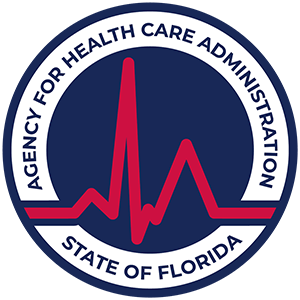Understanding Substance Use, Abuse and Chemical Dependency
Dive deep into substance use abuse and chemical dependency, its societal impact, and resources for help.
Understanding Substance Use
Substance use, including the consumption of drugs and alcohol, is a significant concern in the United States and globally. Understanding the different types of drugs and their potential impact on mental health is vital when addressing the issue of substance use abuse and chemical dependency.
Exploring Different Drugs
There is a wide range of drugs that can lead to substance use abuse and chemical dependency. Some of the commonly used drugs include:
- Marijuana: Made from the hemp plant, Cannabis sativa. The main psychoactive chemical in marijuana is delta-9-tetrahydrocannabinol, or THC.
- Cocaine: A powerfully addictive stimulant drug made from the leaves of the coca plant native to South America.
- Heroin: An opioid drug made from morphine, a natural substance extracted from the seed pod of various opium poppy plants.
- Ketamine: A dissociative drug used as an anesthetic in veterinary practice. Dissociative drugs are hallucinogens that cause the user to feel detached from reality.
- Ayahuasca: A tea made in the Amazon from a plant (Psychotria viridis) containing the hallucinogen DMT, along with another vine (Banisteriopsis caapi) that contains an MAO inhibitor preventing the natural breakdown of DMT in the digestive system.

Impact on Mental Health
Substance use can have a profound impact on mental health. Chronic use of drugs or alcohol can cause serious mental well-being issues and increase the likelihood of self-harm or suicide [2]. Some drugs, such as cannabis, have been shown to increase the chances of developing psychosis or a psychotic disorder.
The use of cocaine can lead to ongoing problems with depression, paranoia, or anxiety [2]. Heroin, on the other hand, is highly addictive and can have serious long-term effects on daily life, including difficulty maintaining a job and affecting relationships.
Hallucinogenic drugs like LSD and dissociative drugs like ketamine can worsen mental health problems and trigger mental health problems in people who haven't experienced them before.
Understanding the different types of drugs and their impacts on mental health is essential in the broader context of substance use abuse and chemical dependency. This knowledge can aid in prevention efforts, early intervention, and the development of effective treatment strategies.
Effects of Specific Substances
To gain a comprehensive understanding of substance use abuse and chemical dependency, it is crucial to examine the effects of specific substances. This section will delve into the impact of marijuana, cocaine, heroin, and ketamine.
Marijuana and Its Effects
Marijuana, derived from the hemp plant Cannabis sativa, contains the main psychoactive chemical delta-9-tetrahydrocannabinol, more commonly known as THC. This compound is responsible for the 'high' that users experience. The effects of marijuana can vary greatly depending on the individual and the amount consumed, but it often includes altered senses, mood changes, impaired memory, and difficulty with problem-solving. Heavy marijuana use can lead to a disorder that causes users to experience withdrawal symptoms when not using the drug, which can interfere with daily life.
Cocaine and Mental Health
Cocaine is a highly addictive stimulant drug. It can have immediate physical effects, such as increased heart rate and blood pressure, but it can also have a significant impact on mental health. The use of cocaine can lead to ongoing problems with depression, paranoia, or anxiety, which can persist long after the drug has been consumed. These side effects can significantly affect a person's ability to function normally and maintain healthy relationships.
Heroin and Daily Life
Heroin is an opioid drug made from morphine, a natural substance derived from the seed pod of various opium poppy plants. It is a highly addictive substance that can have severe long-term effects on daily life. This includes difficulty maintaining a job, impacting relationships, and an overall decrease in quality of life. Due to its strong addictive properties, individuals who use heroin often find it extremely difficult to stop, even when they want to.
Ketamine and Dissociative Effects
Ketamine is a dissociative drug used primarily as an anesthetic in veterinary practice. Dissociative drugs are a class of hallucinogens that cause users to feel detached from reality. This detachment can manifest as a feeling of being separated from one's body or environment. In addition to these dissociative effects, ketamine can also cause hallucinations, memory loss, and changes in perception. These side effects can make it difficult for users to interact with others or carry out everyday tasks.
Understanding the effects of these specific substances is a key aspect of addressing the broader issue of substance use abuse and chemical dependency. Each drug has unique effects and potential risks, highlighting the need for comprehensive education and prevention strategies.
Differentiating Substance Abuse and Addiction
Understanding the difference between substance abuse and addiction is key to a comprehensive understanding of substance use abuse and chemical dependency.
Substance Abuse vs. Addiction
While these terms are often used interchangeably, they represent different experiences on the spectrum of substance use disorder. Substance abuse refers to the misuse of drugs or alcohol in a way that leads to harmful consequences. Individuals with substance abuse problems often have the capacity to quit or change their behavior. Conversely, addiction represents a disease where the individual cannot stop using substances despite the harm it causes. This inability to cease substance use is driven by changes in the brain's reward system, specifically the dopamine pathway responsible for feelings of motivation, pleasure, and reward.
Research indicates that addiction is not a result of moral failing or individual weakness. Rather, it's characterized by changes in the brain that lead to compulsive substance use [4].
Signs of Addiction
Recognizing the signs of addiction is the first step towards seeking help for oneself or a loved one. These signs vary depending on the substance used, the length of use, and the individual's overall health. However, some common indications include:
- A shift in priorities, where substance use takes precedence over important aspects of life
- Continued use of the substance despite harmful consequences
- Lack of control over the amount or frequency of use
- Developing a tolerance, requiring larger amounts to achieve the same effect
- Experiencing withdrawal symptoms when attempting to stop use
Substance use disorder (SUD) is a complex but treatable disease that affects cognitive function and behavior. Effective treatment should address all mental and physical health needs of individuals with SUD, aiming to help them live productive lives within their family, work, and society. Treatment could involve behavioral therapy, group therapy, and medication.
Protective factors in a person's life can reduce the likelihood of substance use or addiction. Having positive adult role models, setting personal goals, engaging in meaningful activities, and being connected to a supportive community can all play a role in preventing the onset of substance use disorders.
Health Consequences of Substance Use
Substance use, abuse, and chemical dependency can have severe implications on an individual's overall health. These consequences can range from physical health complications to significant mental health impacts.
Physical Health Complications
Drug addiction can lead to various health consequences, including lung or heart disease, stroke, cancer, and mental health conditions. Chronic substance use is a risk factor for these illnesses, indicating that drug and alcohol abuse can lead to a range of physical health complications.
Long-term drug use can be detected through imaging scans, chest X-rays, and blood tests, which reveal damaging effects on the body. For example, tobacco smoke can cause cancers, methamphetamine can result in severe dental issues known as meth mouth, and opioids can lead to overdoses and death. Some substances like inhalants may harm nerve cells in the brain or peripheral nervous system.
Moreover, drug use increases the risk of infections such as HIV and hepatitis C due to sharing injection equipment or engaging in unsafe practices. Injection drug use can also lead to severe health issues like endocarditis (heart infections) and cellulitis (skin infections) caused by exposure to bacteria.
Mental Health Impact
The mental health impact of substance use is equally concerning. Using drugs or alcohol for a prolonged period can cause serious issues for mental well-being and increase the likelihood of self-harm or suicide [2].
Certain drugs, such as cannabis, have been shown to increase the chances of developing psychosis or a psychotic disorder. The use of cocaine can lead to ongoing problems with depression, paranoia, or anxiety. Heroin is highly addictive and can have serious long-term effects on daily life, including difficulty maintaining a job and affecting relationships. LSD can worsen mental health problems and trigger mental health problems in people who haven't experienced them before.
Mental disorders like anxiety, depression, or schizophrenia commonly co-occur with drug addiction. Sometimes mental illnesses precede addiction, while in other cases drug use can exacerbate existing mental health conditions, especially in individuals with specific vulnerabilities. Individuals with anxiety or depression may turn to drugs to alleviate psychiatric symptoms, potentially worsening their mental disorder and increasing the risk of addiction.
Furthermore, addiction to drugs and alcohol alters the brain's reward system by hijacking the dopamine pathway responsible for feelings of motivation, pleasure, and reward. This causes individuals to prioritize substance use over important aspects of their life, leading to damaging effects of addiction and a shift in priorities.
By understanding the health consequences of substance use, individuals can make informed decisions about their health and well-being. Seeking help and resources is crucial for those struggling with substance use and abuse.
Seeking Help and Resources
When dealing with substance use abuse and chemical dependency, it's important to know that help is available. Various support systems and resources exist to assist individuals on their journey to recovery.
Support for Substance Use
For First Nation, Inuit, or Métis individuals, culturally sensitive resources are available through the National Native Alcohol and Drug Abuse Program and National Youth Solvent Abuse Program. These programs provide support tailored to the unique needs and experiences of these communities.
If you're living with chronic pain and seeking information on using substances for treatment, resources are available. These guides provide reliable and up-to-date information on the safe and effective use of substances for pain management [6].
Harm reduction centers are another important resource for individuals dealing with substance use. These centers can be reached at 1-902-470-8888 or 1-888-470-5888 and provide locations and services for individuals looking for support in harm reduction [6].
Helplines and Services
In addition to these resources, several helplines and services are available to provide immediate support to individuals dealing with substance use. These include:
These services, available at any time in Canada, provide essential support to individuals who need help with substance use, including overdose prevention and tobacco cessation [6].
In addition to these nationwide services, various provincial and territorial health and support services are available to provide localized support. These services offer a range of support options, including mental health support, substance use counseling, and more.
Remember, seeking help is the first step towards recovery. Whether you're dealing with substance use yourself or seeking help for a loved one, these resources can provide the support and guidance you need.
Societal Impact of Substance Abuse
Substance use disorders (SUDs) have a far-reaching impact on society, affecting not only the individuals who struggle with addiction but also their families, communities, and society at large. These effects include increased healthcare costs, crime, and lost productivity, among other challenges.
Effects on Society
Substance use among adolescents is associated with a range of problems, including the spread of HIV/AIDS, increased risk for vehicular fatalities, and behaviors leading to juvenile delinquency. SUDs are among the most commonly diagnosed disorders within the juvenile justice system, further underscoring the societal impact of these conditions.
Over the past five years, there has been a rise in marijuana use among adolescents, with 12.5% of 8th graders, 28.8% of 10th graders, and 36.4% of 12th graders reporting use in the last year. Synthetic marijuana use has also emerged as a trend among high school seniors, with 11.4% reporting use in the previous year. Meanwhile, cigarette use and binge drinking have decreased, though use of tobacco products remains high and a significant percentage of students report binge drinking [7].
Data from the National Institute on Drug Abuse (NIDA) and the Centers for Disease Control and Prevention (CDC) reveal high numbers of adolescent substance use in the United States, which can lead to increased risk of transmission of sexually transmitted infections, vehicular fatalities, juvenile delinquency, and other problems associated with physical and mental health.
Racial Disparities in SUD
A closer look at the data reveals significant racial disparities in the prevalence of SUDs. According to Medical News Today, SUD prevalence is more common among Black people than Hispanics, Asians, and those who are white. It is also more common in males among various racial groups.
In the U.S., Black Americans are 6–10 times more likely to be incarcerated for drug offenses, although they are not necessarily more likely to use illegal drugs. This racial disparity could impact prevalence data. Furthermore, SUD from illegal opioids is a significant public health problem in the U.S., with more than 760,000 people dying from opioid overdoses since 1999. In 2018, two out of three overdoses were linked to opioid use.
These racial disparities highlight the need for culturally sensitive and inclusive approaches to address substance use disorders, as well as policies and practices that reduce racial biases in law enforcement and the criminal justice system. They also underscore the importance of addressing the social determinants of health, which include factors like socioeconomic status, education, and access to healthcare, that can influence the risk and outcomes of SUDs.


.jpg)











.svg)








